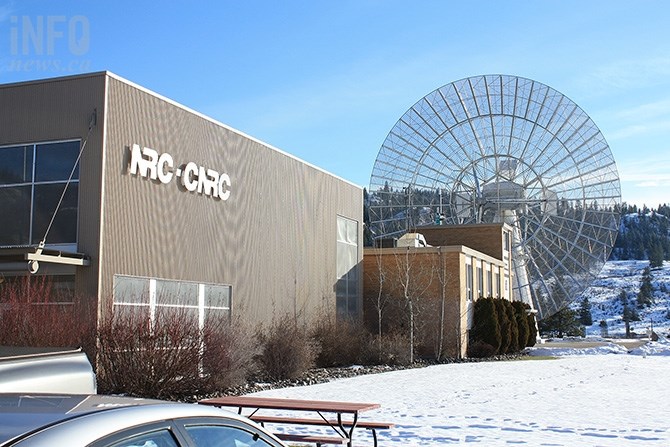
The Dominion Radio Astrophysical Observatory opened with the 25-metre John Galt Telescope, shown here beside the observatory's lab buildings.
(STEVE ARSTAD / iNFOnews.ca)
February 21, 2016 - 12:00 PM
PENTICTON - The science of radio astronomy has been taking place in the South Okanagan for 56 years, though it seems few people know about the observatory nestled in the White Lake Road area, or what exactly happens there.
The Dominion Radio Astrophysical Observatory, also known as the White Lake Observatory, has been advancing the science of radio astronomy through the development of several telescopes, many of which are still collecting data.
Operated under the National Research Council of Canada's Herzberg Insititute of Astrophysics, the observatory has done a lot of work over the years and has played an important role in the development of radio astronomy world wide. The observatory not only collects data, it also develops the equipment needed to collect that data and is known as a world leader in the development of digital signal processing systems.
If you stop by the observatory, you will find a history of telescope development at the White Lake Road facility, with new radio telescopes rising in the foreground of former projects. Here's some information to help you understand just what the observatory does, and what it is you are seeing when you drive up to the secluded site.
THE 'POLE FARM'

The 22-megahertz array.
(STEVE ARSTAD / iNFOnews.ca)
The 22-megahertz array was one of the observatory’s first telescopes and consists of a layout of 1,700 wooden poles, now known as the pole farm.
The T-shaped configuration extends for 1.3 kilometres across the basin floor and covers 65,000 square metres. The posts support several thousand metres of wire to form the telescope, which was used from 1965 and 1969 to observe quasars and distant galaxies.
JOHN GALT TELESCOPE
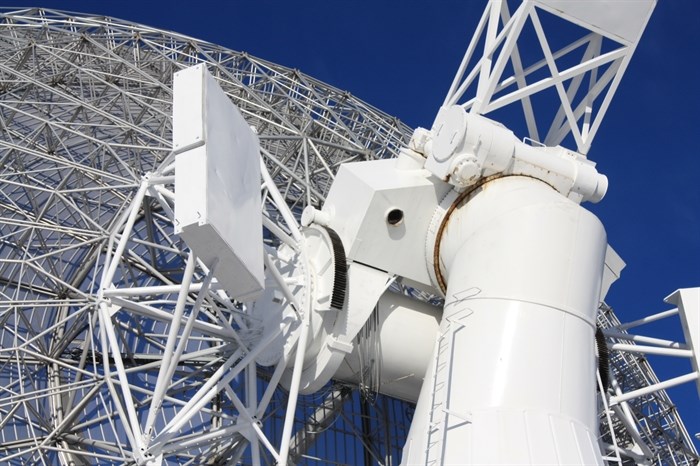
The back of the John Galt Telescope.
(STEVE ARSTAD / iNFOnews.ca)
The John Galt Telescope is the observatory’s first project. The single, 26-metre dish remains in operation today
SYNTHESIS TELESCOPE
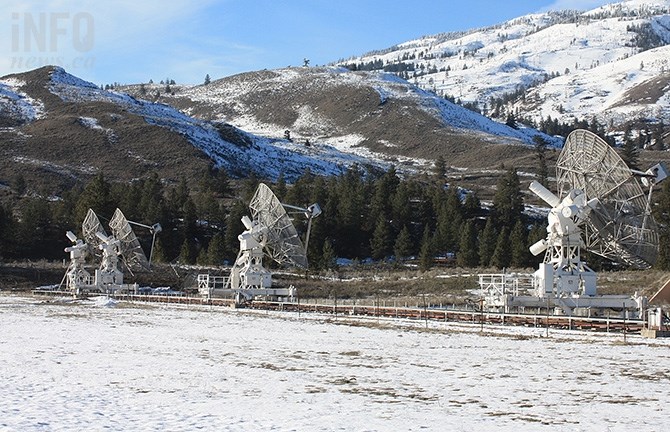
The Synthesis Telescope is made up of several dishes that move back and forth on the observatory property on rails.
(STEVE ARSTAD / iNFOnews.ca)
The Synthesis Telescope is a seven-dish array where the individual dishes are mounted on a rail track and can be moved into different configurations. From 1995 to 2005, the Synthesis Telescope mapped a large portion of the Milky Way.
SOLAR FLUX MONITORS
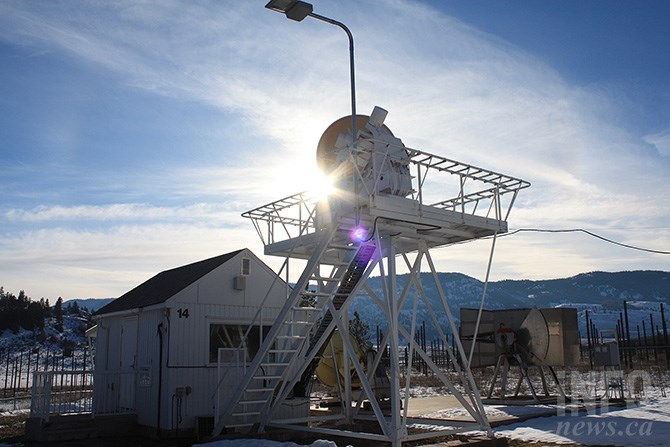
The Dominion Radio Astrophysical Observatory's solar flux monitor. The telescope is used to monitor the sun, accumulating data used by scientists, businesses and agencies around the world.
(STEVE ARSTAD / iNFOnews.ca)
Two solar flux monitors continue to provide data on solar activity which is used internationally. The observatory leads the world in solar activity monitoring, and has been providing solar data to government and industry around the world since the observatory opened.
CHIME PROJECT
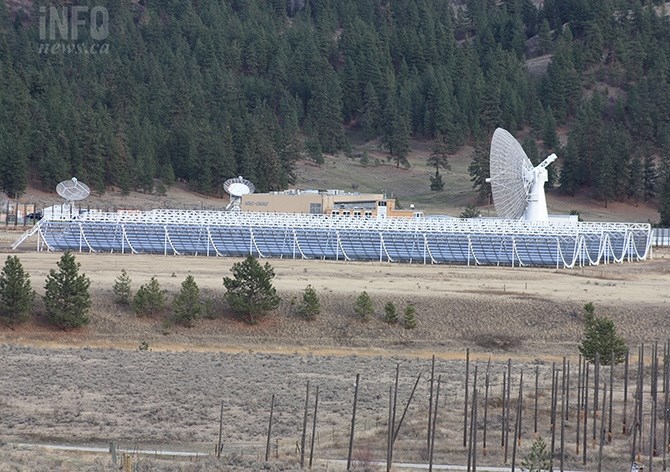
Dominion Radio Astrophysical Observatory's latest project is CHIME.
(STEVE ARSTAD / iNFOnews.ca)
The most current telescope project is the CHIME pathfinder, being built by a consortium of Canadian universities. It is in the commissioning stage and is the largest radio telescope in Canada.
The CHIME project is related to research which led to last week’s news story regarding the discovery of gravitational waves.
"The CHIME project is aimed at mapping the earliest hydrogen structures in the early universe," observatory astronomer Ken Tapping says. "These structures are a consequence of the gravitational waves, which were expected to be there doing their stuff, but until recently we did not know for sure.”
MULTI-NATIONAL ARRAY PROJECT
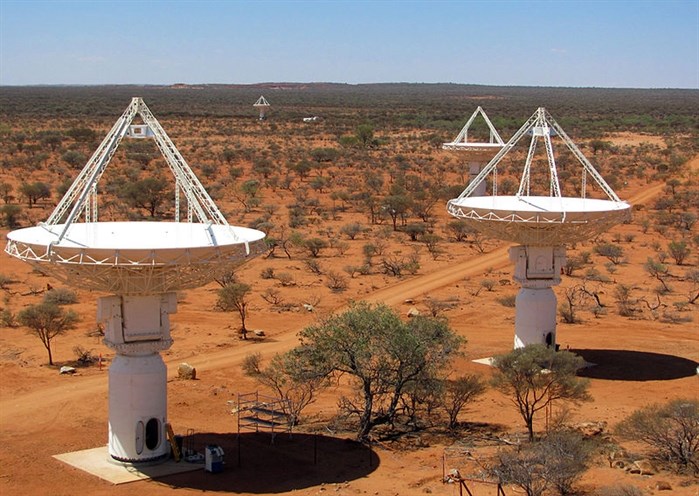
ASKAP antennas at the Murchison Radio-astronomy Observatory in Western Australia, 2010.
Image Credit: CSIRO via Wikipedia
The observatory is currently involved in a multi-national effort to build the Square Kilometre Array. The project involves the work of 10 countries and could see a highly sensitive telescope with a collecting area of one square kilometre built in Australia.
PRIVATE INDUSTRY
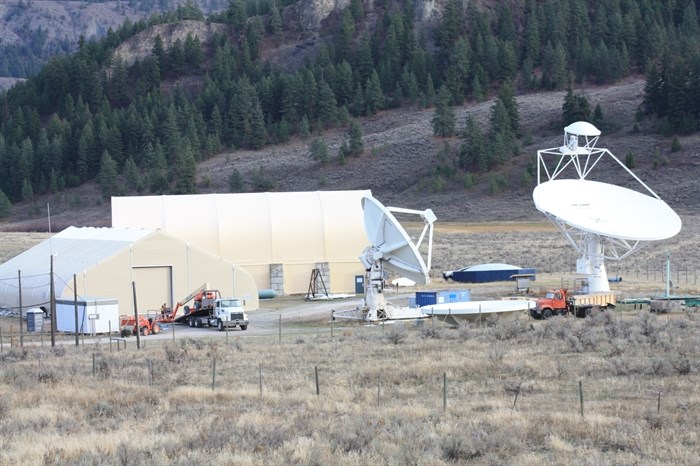
Experimental telescopes at the observatory site.
(STEVE ARSTAD / iNFOnews.ca)
The observatory works with private industry to develop new technologies, including the use of materials such as carbon reinforced plastic to build radio telescopes.
NEARLY SHUT DOWN BY CUTBACKS
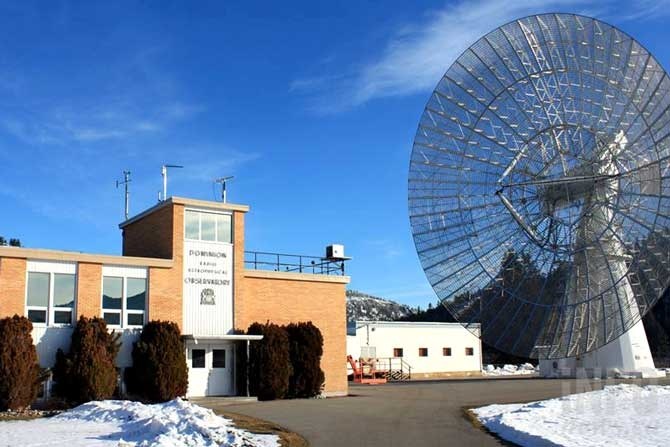
(STEVE ARSTAD / iNFOnews.ca)
Federal government cutbacks almost saw the observatory shut down in the early 1990s. Observatory Director Sean Dougherty says the observatory rebounded since that 'gloomy period.'
“A lot of these bigger projects have come along since then,” he says. "Our focus has been on top quality science — what is it the science the community wants us to do, in addition to being much more aware of what’s going on globally. Astronomy is global now, like many other businesses, and you have to pay attention to that stuff."
To contact a reporter for this story, email Steve Arstad at sarstad@infonews.ca or call 250-488-3065. To contact the editor, email mjones@infonews.ca or call 250-718-2724.
News from © iNFOnews, 2016